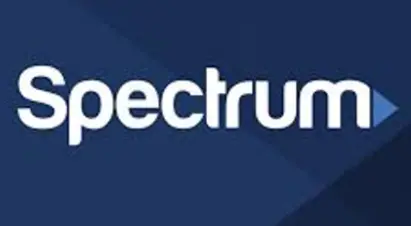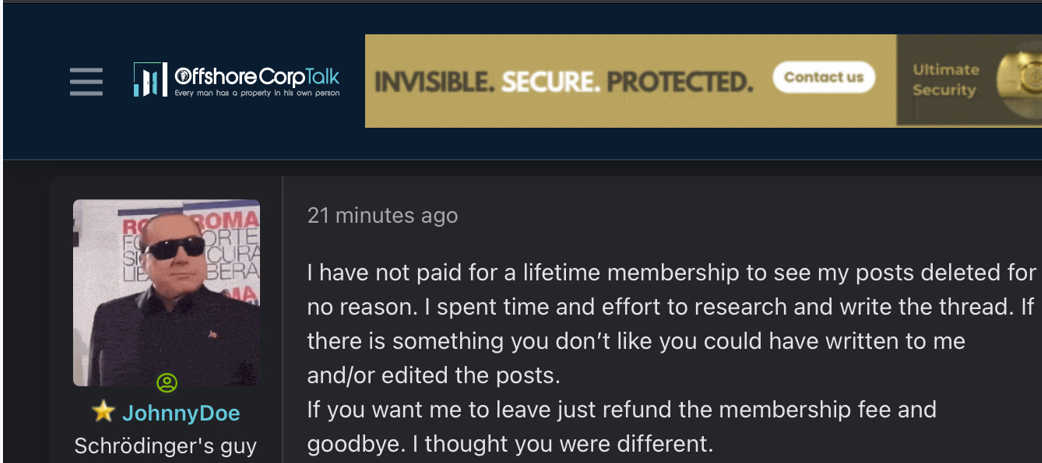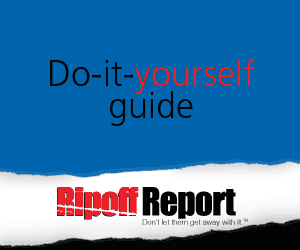Complaint Review: Swiss Finance Academy - Boston Massachusetts
- Swiss Finance Academy PO Box 990062 Boston, Massachusetts U.S.A.
- Phone: 800-284-8061
- Web:
- Category: Colleges and Universities
Swiss Finance Academy Bait & Switch company, Promieses are all false! Whole program is ran by two incompentent people! Boston & Switzerland Massachusetts
*Consumer Comment: Facts you MUST know about SFA to help evaluate the above postings.
*Consumer Comment: Swiss Finance Academy Lawsuit Updates
*UPDATE Employee: SFA IS KNOWN FOR EXCELLENCE
*Consumer Suggestion: ....
*Consumer Comment: Swiss Finance Academy is Overpriced for Value
*Consumer Comment: Swiss Finance Academy is Overpriced for Value
listed on other sites?
Those sites steal
Ripoff Report's
content.
We can get those
removed for you!
Find out more here.
Ripoff Report
willing to make a
commitment to
customer satisfaction
Click here now..
I attend this program Summer of 2008. From their website the school looks amazing, BUYER BEWARE! It is a 100% bait and switch scam. They tell you where the location is then a week before the program starts they change the location and say no refunds what so ever. They tell you a week before you come you must bring your OWN pillow, sheets, comforter and shower towels; If I am traveling 4000 miles I don't wanna have to bring all that crap, if you wanted to have the school get it they would do it for an extra 100 bucks.
When I got to the school there were 150 kids and only 2 people running the whole program, it was so un organized I cannot even explain my frustration with this point. We go to our rooms, which from the website are suppose to be nice but when we find out where they are we have to walk up a VERY steep hill for over half a mile, no AC in the room and it was 90 degrees out with 100% humidity and no wifi and the rooms are comparable to a hostel, it might have even been one!
For breakfast we had toast... I wish I was kidding... but I am not that is all we got for breakfast was TOAST!!! for lunch and dinner we got the same thing everyday pasta and a bottle of water. If you have even one drink of alcohol you will be kick out the program no questions asked, they give you like 15 min to leave ( I don't really have an issue with this just a warning). So that is the housing and the food now for the course material.
One word for the classroom material "JOKES". I have never taken any account or anything and everything they taught was a "JOKE" The person in-charge of the whole things sits up there and talks about his experience in banking... uhh I dint pay 8000$ to listen to you talk about yourself. The first week we did learn some accounting stuff but the rest of the two weeks we learned NOTHING, i wish i was joking but what we learned would not be helpful to ANYONE!! The person in charge tells you that you should be humble at all times yet this guys is sooo boastful its not even funny. This person is such a bad teacher again words can not explain it.
They make all these promises and none of them are true, the teachers they promise FALSE, out of class help they promise FALSE, meeting hedge-fund managers and other bankers FALSE, mock interviews FALSE, location FALSE, everything is fake from what the website says DO NOT BELIEVE IT PLEASE!!!!
I will say I had a fun time making friends... BUT GUESS WHAT!! I dint pay 8000$ to make a few friends... If i took a poll from the 150 people that went this summer 130 people would ask for a refund cause they know they got worked.
Don't believe these people! Even there phone number is fake... call it... it will direct you to some calling center which is who knows where and then they will forward your number to them to call you back. Its all a joke and a scam that needs to be stopped!! I am sorry about my spelling and english as it is not the best!
DO NOT MAKE THE MISTAKE I MADE AND LOOSE 8000$$$
Lilly
Kansas City, Kansas
U.S.A.
This report was posted on Ripoff Report on 07/19/2008 01:27 PM and is a permanent record located here: https://www.ripoffreport.com/reports/swiss-finance-academy/boston-massachusetts-02199-0062/swiss-finance-academy-bait-switch-company-promieses-are-all-false-whole-program-is-ra-353176. The posting time indicated is Arizona local time. Arizona does not observe daylight savings so the post time may be Mountain or Pacific depending on the time of year. Ripoff Report has an exclusive license to this report. It may not be copied without the written permission of Ripoff Report. READ: Foreign websites steal our content
If you would like to see more Rip-off Reports on this company/individual, search here:
#6 Consumer Comment
Facts you MUST know about SFA to help evaluate the above postings.
AUTHOR: Richard - (U.S.A.)
SUBMITTED: Monday, February 23, 2009
Swiss Finance Academy posted a rebuttal saying that "The above defamatory postings are entirely false." I assume they are referring to the posts by "Lilly" and by "Disappointed". Are those defamatory? Are they ENTIRELY false? Read the report I posted here:
http://www.ripoffreport.com/reports/0/427/RipOff0427337.htm
Then come back and read the "Lilly" and "Disappointed" postings again and see what you think. There is a lot more to this story than the claim that a student was disgruntled for being expelled. Why was he expelled? What's the REAL reason?
What was he disgruntled about? Did he, perhaps, have a very good reason for being disgruntled?
#5 Consumer Comment
Swiss Finance Academy Lawsuit Updates
AUTHOR: Not Jeremy - (U.S.A.)
SUBMITTED: Sunday, February 22, 2009
If you read the above statement on the SFA website you should ask Swiss Finance Academy why was the student disgruntle! Now there is a good question for them!
If you are really interested in this school you should REALLY ask yourself if you want to attend a school who might sue you! If you would like to read public documents on Swiss Finance Academy's lawsuit against a student go to the link bellow.
http://swissfinancelawsuit.blogspot.com/
#4 UPDATE Employee
SFA IS KNOWN FOR EXCELLENCE
AUTHOR: Sfa - (U.S.A.)
SUBMITTED: Monday, January 19, 2009
SFA IS KNOWN FOR TEACHING EXCELLENCE, PRACTICAL CURRICULUM, EXCEPTIONAL RESOURCES AND A VIBRANT STUDENT-ALUMNI COMMUNITY
The above defamatory postings are entirely false. They were concocted by a student who was expelled from SFA and who subsequently became disgruntled. Please visit the following website that provides further information about the above postings, as well as testimonials from SFA alumni who strongly speak to our highest quality standards. Visit: www.swissfinanceacademy.org/other/r.php
#3 Consumer Suggestion
....
AUTHOR: Anonymous - (U.S.A.)
SUBMITTED: Saturday, January 10, 2009
The following are several actual cases and their solutions copied from SFA proprietary course package. Enjoy.
Case 1
Distressed Debt Negotiation
It is the end of fiscal year 2006 for your hypothetical client ABC Inc. (the Company), a high tech company trying to decide the next step at a difficult stage of its corporate life when there are several financing options but none of them seem right.
ABC sells products that are gaining market share, but requires large amounts of capital expenditures for infrastructure development over the next five years before it becomes "cash flow positive", i.e. before it starts to receive more cash in revenues than it spends in costs, expenses and critical infrastructure investments.
ABC has $2.5 billion in cash and can stay in operation for only two more years without additional funding. By generating smaller and smaller cash deficits each year, ABC plans to eventually become a viable operation with "free cash flow". However, it needs $1 billion more than the $2.5 billion already available before it reaches the cash flow positive break even point. Unless it gets this $1 billion from investors, in the form of debt, equity or hybrid of some sort, it will go out of operation in 2 years, resulting in the loss of $2.5 billion to equity shareholders (the money they have already invested) and $6 billion to debt holders, the money they have loaned to the company.
The stock of the Company has deteriorated from $100 when the market perceived it to be a top company in a promising industry, to $3 today, when the market considers it a risky company that may go bust, in an industry that has become highly competitive.
The ability of the company to raise debt by issuing bonds has vanished -- first, the bond prices declined due to the perception of high default risk because it had a $1 billion funding gap. The bonds now are at 35 cents on a dollar. (So if someone bought one bond for $1000, he can now sell it for only $350). These lower bond prices have meant increased yield, as there is an inverse relationship between price and yield. Since high yield indicate that the underlying interest rate is high, it has became unaffordable for the company to close the $1 billion "funding gap" by issuing high interest paying debt.
You are ABC's advisor. One afternoon, your phone rings, and it is your client ABC. Their stock has gone down to $2.50 this morning, and they want a recommendation as to what to do to improve their stock price. After all, they are generating revenues, getting closer to the free cash flow positive stage, executing their operational plan, and still have enough cash ($2.5 billion) to keep them in operation for 3 years. They tell you that a competing bulge bracket firm suggested that they should pursue the following to solve their problems: Use cash reserves to buy back bonds in the open market.
See the detailed financials, valuation, comparables and other related facts below. Unlike your client, you are not so enthusiastic about the idea. How do you proceed?
Solution to Case 1:
On the one hand, as bonds are at only 35% of their face value, buyback will save a lot of money in interest payments in future years as well as improve the Company's balance sheet as it will have substantially less debt in relation to equity. This "deleveraging" would make ABC attractive to debt investors, which will cause bond prices to recover. The resulting increased financial flexibility will allow stock prices to recover as well. Shareholder value will be increased in many ways: the stock price will go up, interest payments will be reduced, $x billion less in debt would need to be repaid in the future, and new funding at better terms will become available. Appears to be a win-win situation at first. However, in reality it is not the case after spreading your own financials in excel. Consider also the primary risks associated with the Facility. Consider further the extent of equity dilution if an equity offering were done. Elaborate on all possible solutions and their outcomes you can think of. You will need to project cash flows and use several methods to prepare a valuation of the company assuming that it will not got out of business. How would you convince potential investors to provide an additional $y billion in debt or equity capital? How do you convince your client to go with your advisory service? Also ask yourself whether this is a viable company at all?
Case 2:
You manage accounts for two individuals who are friends with each other. They tend to compare their portfolio performance. Both are biased but in different ways - one dislikes call options while the other puts.
Creative Problem:
Your job is to satisfy the two clients by creating two different portfolios (1) one without calls and one without puts, in such a way that (2) neither portfolio crashes if the overall stock market does (3) both individuals' portfolios behave roughly the same way at the end of the day (otherwise one of the clients will be unhappy with you) (4) use a combination of puts, calls, cash and securities.
Solution to the Case 2:
This needs to be modeled as a put call parity problem. Consider portfolios you design p1 and p2.
Underlying or security in this example is the stock market and the options are on the market index.
In p1: You would add some cash and call options. Two possible cases. Case 1: Price of the underlying goes down. Cash will obviously have the same value as before but call option will expire worthless. Case 2: Price of underlying goes up. Portfolio value will rise quickly above and beyond the value of cash, due to the call option going 'in the money.'
In p2: You would add some puts and some underlying. Case 1: Price of the underlying goes down. Underlying by definition becomes less and less valuable; however the put moves in the opposite direction, but at a faster pace, so it creates the effect that there is always some positive value in the portfolio, kind of like having cash. The important thing to understand here is that there need to be enough puts in p2 of the right strike price and maturity, etc. so that the loss from the underlying's value decline is less than the profit from the puts in p2 at various pressure points. Case 2: Price of the underlying goes up. This is obviously good for the underlying's overall value in p2, but the put becomes worthless.
p2 behaves like p1 does, hence the use of put call parity. Manipulate the numbers in excel as a fund would, to come with the ratio of cash/call and underlyings/put, so that you hedge correctly and get the portfolio behavior you desire. You also need to be aware of variables such as different strike prices/maturities of options. Behavior would also depend upon whether it is an American or a European option pay close attention.
Case 3:
Derive the high level math behind the previous case
Solution outline for Case 3:
The math is derived as following.
f(x) = x is the price of the underlying. Cash value doesn't depend on the underlying. Call and put options have fixed limited downside (cost of purchasing them) but unlimited upside, in the opposite direction, hence opposite signs.
Call value cv = g(x) while put value pv = - h(x). That means you can manipulate the math to derive cv if you had pv. Hence the parity.
#2 Consumer Comment
Swiss Finance Academy is Overpriced for Value
AUTHOR: Disappointed - (U.S.A.)
SUBMITTED: Thursday, August 28, 2008
I attended the Swiss Finance Academy summer program in Switzerland some time ago. The Academy's promotional materials depicted a very impressive and prestigious program, but the reality of the situation proved differently. The program largely consisted of undergraduate students, mostly freshman and sophomores, with a sprinkling of working professionals and graduate students --- contrary to the impression given. The housing accommodations were substandard, lacking toilet paper, soap, air conditioning, and fans. Some chalets did not have washer and dryer machines. The Academy also encouraged letting the natural air dry clothing when a dryer was not available. Many people were without internet connections for several weeks because of significant delays in obtaining internet service and routers. The food offerings were disappointing. Breakfast consisted of grain cereal, dry rolls, and beverages. Lunch and dinner primarily consisted of pasta, salad, and sparse meat product. The food was not appealing to the extent that a growing number of people frequented local establishments rather than the food that the Academy provided. As for the instruction, the classroom was in the basement of a museum closed for the summer. The instruction was rather lacking with two people primarily leading the training. The first person spoke a rather long time about his experience at investment banks and emphasized that students exhibit humbleness. The second instructor was somewhat better, but both did not seem to have a firm grasp of the materials when they sometimes made errors in describing accounting or other complicated concepts. The staff did not seem responsive and seemed to view the students as an inconvenience. One instructor yelled quite frequently and would be better suited to a third grade classroom than a room of young adults. Classroom materials were lacking with handouts placed in a giant orange binder. These materials did not have the depth and breadth of academic textbooks. Not enough time was spent on financial modeling because it seemed like it was done on the fly. Students were made to wear index cards (name hand printed with magic marker) with string around their necks. While promotional materials displayed a career panel, there was not a dedicated one. Instead, an executive headhunter, who did not recruit for entry level positions, joined business school admissions officers. The Academy's entrepreneurship program was disgraceful while the investment banking program was slightly better, but not by much. Most people were disappointed with the program because they had such high hopes. Some people voluntarily left the program because it did not meet their expectations. At that time, the program was four weeks long. There were certainly periods of time where students were idle because the work load ebbed and flowed. Some homework assigned seemed more like busy work and did little to add value. The program cost nearly $9,000. When you factored in airfare and other incidentals, it cost at least $11,000. Hindsight is always 20/20 so I would not recommend that anyone spend money is this program. There are other programs that will provide a more robust training at a fraction of the Swiss Finance Academy cost.
#1 Consumer Comment
Swiss Finance Academy is Overpriced for Value
AUTHOR: Disappointed - (U.S.A.)
SUBMITTED: Wednesday, August 27, 2008
I attended the Swiss Finance Academy summer program in Switzerland some time ago. The Academy's promotional materials depicted a very impressive and prestigious program, but the reality of the situation proved differently. The program largely consisted of undergraduate students with a sprinkling of working professionals and graduate students --- contrary to the impression given. The housing accommodations were substandard, lacking toilet paper, soap, air conditioning, and fans. Some chalets did not have washer and dryer machines. The Academy also encouraged letting the natural air dry clothing when a dryer was not available. Many people were without internet connections for several weeks because of significant delays in obtaining internet service and routers.
The food offerings were disappointing. Breakfast consisted of generic cereal, dry rolls, and beverages. Lunch and dinner primarily consisted of pasta, salad, and meat product. The food was not appealing that a growing number of people frequented local establishments rather than the food that the Academy provided. As for the instruction, the classroom was in the basement of museum. The instruction was rather lacking with two people primarily leading the training. The first person spoke a rather long time about his experience at investment banks and emphasized that students exhibit humbleness. The second instructor was somewhat better, but both did not seem to have a firm grasp of the materials when they sometimes made errors in describing accounting concepts. The staff did not seem responsive and seemed to view the students as an inconvenience. One instructor yelled quite frequently and would be better suited to a third grade classroom than a room of young adults.
Classroom materials were lacking with handouts placed in a giant orange binder. These materials did not have the depth and breadth of academic textbooks. Not enough time was spent on financial modeling because it seemed like it was done on the fly. While promotional materials displayed a career panel, there was not a dedicated one. Instead, an executive headhunter, who did not recruit for entry level positions, joined business school admissions officers. The Academy's entrepreneurship program was disgraceful while the investment banking program was slightly better, but not by much. Most people were disappointed with the program because they had such high hopes. Some people voluntarily left the program because it did not meet their expectations.
At that time, the program was four weeks long. There were certainly periods of time where students were idle because the work load ebbed and flowed. Some homework assigned seemed more like busy work and did little to add value. The program cost nearly $9,000. When you factored in airfare and other incidentals, it cost at least $11,000. Hindsight is always 20/20 so I would not recommend that anyone spend money is this program. There are other programs that will provide a more robust training at a fraction of the Swiss Finance Academy cost.

Advertisers above have met our
strict standards for business conduct.





































